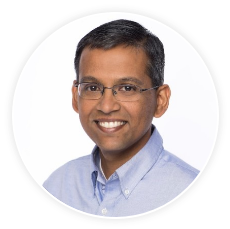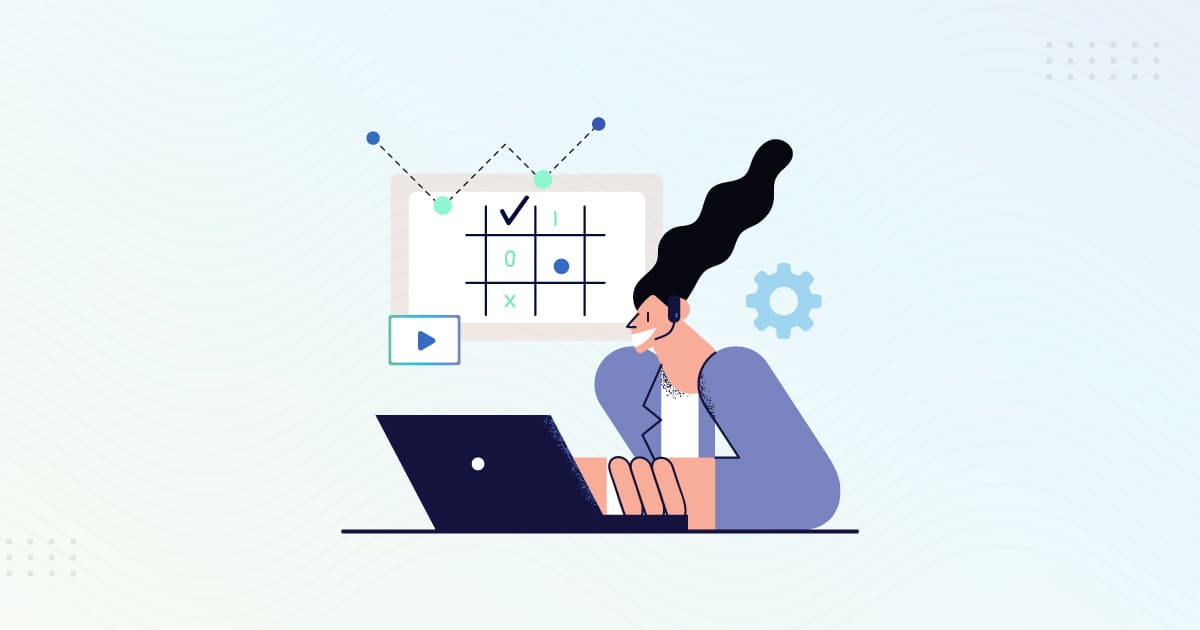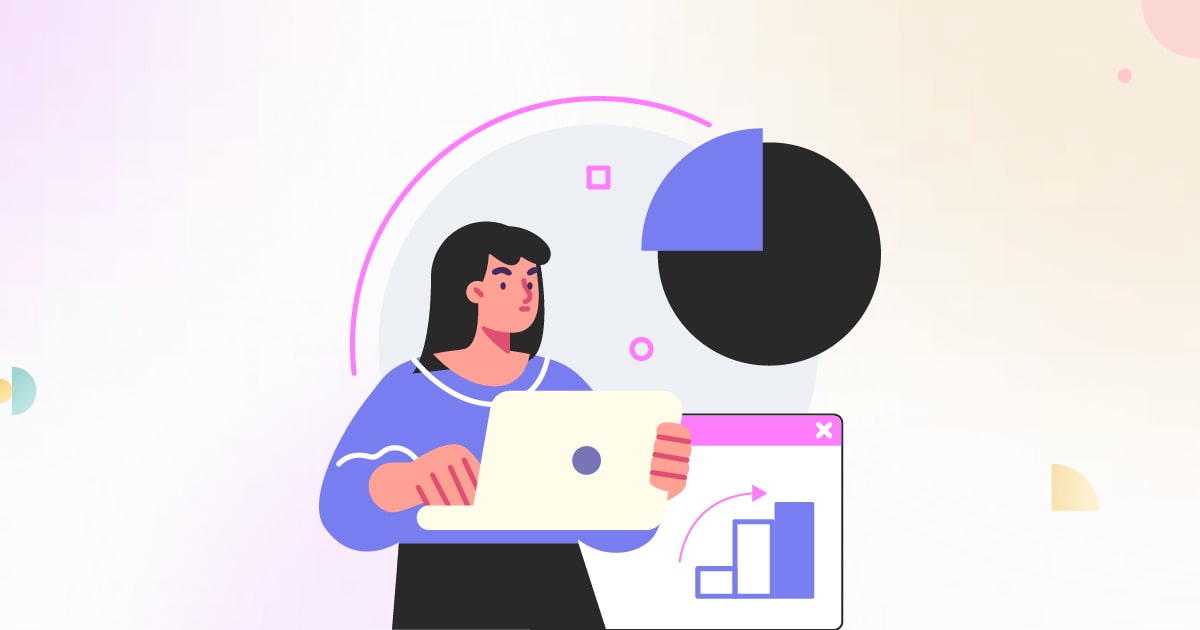While digital transformation provides concrete benefits to organizations and employees, it also poses several challenges to be addressed to exploit the promise of digital technology fully. Nurturing a learning-friendly culture through various methods of generating innovation and ensuring an organization’s survival through digital transition is an intelligent strategy to support employee growth and retention. In such circumstances, a Chief Learning Officer (CLO) must coordinate with leadership to ensure that L&D has the necessary resources and support to effectuate real change.
As organizations gear up to embrace the transformed learning and development landscape, we bring to you this informative podcast with a digital transformation expert who has been the CLO and was recently promoted to Vice President (VP) of Digital Transformation.
Listen to Mani Gopalakrishnan, VP of Digital Transformation at The Kraft Heinz Company, in conversation with Nolan Hout, VP, Marketing, Infopro Learning, where he talked about the role of L&D in business transformation, how to succeed as a CLO, and much more.
Listen to the podcast to learn more:
Question:
Where did you learn the business-first approach, which is so ingrained in you?
Expert profile:

Mani Gopalakrishnan, Vice President of digital transformation at The Kraft Heinz Company – A senior executive with over two decades of expertise utilizing technology to improve organizations. From his past jobs at Deloitte, GE, and Kraft Heinz, he uniquely views how strategy, technology, and people leadership fit together. Mani is a master at cultivating organizations, goods, and individuals to reach spectacular results.

Nolan Hout, Vice President of Marketing of Infopro Learning – A seasoned marketing expert with extensive experience in all aspects of marketing, including strategy, digital marketing, and more. He spends most of his time in the L&D industry conducting marketing research to identify the most critical challenges. He leverages this data to create cutting-edge learning solutions that boost business performance and ROI.
An excerpt of the discussion follows:
Nolan:
Hello everyone, Welcome to the podcast!
As always, I am your host Nolan Hout with Infopro Learning.
Today we will sit down with Mani Gopalakrishnan, the Vice President of Digital Transformation at Heinz.
In our podcast today, we will cover many exciting topics ranging from how to climb the ranks within the L&D profession, the role of L&D in business transformation, how to succeed as a CLO, and many other things along the way.
Without any further delay, let’s get to our guests, Mani.
Mani, Thanks for joining us today.
Starting with an engineering college and progressing into the learning space. You have such an interesting professional trajectory, Mani, that I just had to ask you about it.
What made you pursue a career in learning?
Mani: Thanks for the question. I get asked this question a lot, and I would say there was no good reason.
When I finished college, most likely like every other kid in the world, I was looking for a job that would pay well and be more stable. So, my first job was with a company called NIIT, which, by chance, was the most prominent learning outsourcing company at the time.
What’s more interesting is that I got my instructional design (ID) certification at NIIT through an internal training program. My first job was to write instructor-led material for Windows 95. That’s where it all started. Shortly after that, I got a chance to create engines for delivering multimedia content. I was asked to write real code that would let stream multimedia content on a 56.6 Kbps modem.
So, at the time, the career arc was navigating between learning the learning industry and bringing technology to that sector, accelerating how the future of learning would be. So, it was a pretty interesting convergence of events, and none of it was planned.
Nolan: What do you think made you stick with learning?
Mani: The intellectual curiosity required and the drive to keep tackling the world’s big, huge, ambitious challenges are among the fundamentals that remain constant regardless of the job you pursue.
I had no idea what I was doing when I started working for NIIT and creating the Windows 95 instructor-led program since I was essentially writing, writing, and writing in English. At that time, I sat down with my editorial reviewers and learned the nuts and bolts of simplified writing so that the rest of the world could comprehend.
When I learned that people were creating and delivering in a multimedia way, I switched to making an engine that could handle all of this. I had to use the concepts and theories I had learned from an editorial reviewer and in the multiple instructional design classes to develop a technology solution.
In doing so, I combined my technical expertise with the business side. So, that meant facilitating the success of such solutions for our customers. In subsequent iterations, I focused on how I helped my customers achieve their goals, which led me into the world of consulting.
I worked with another company called Sify that was working on similar lines. Since I had done enough work up to this point, I was able to get into Deloitte. Once I joined Deloitte and started working in the U.S., I saw what was possible with learning and development and how important it was to businesses. At that time, it was called learning and development, but it is now called Talent Development.
It taught me the value of bringing technical expertise to bear and broadened my perspective on what is achievable. Sometimes the functional capabilities in L&D, and other times the business skills were called upon. I jumped from one business challenge to another and then another. I began to envision the job of a CLO as a possibility sooner rather than later; this is how my career arc evolved.
Nolan: Where did you learn the business-first approach, which is so ingrained in you?
Mani:
When I think about it, two taxonomies stand out in my mind. Although I may seem profound, none of this was deliberate. In the early phases of a profession, it is crucial to possess a high skill level. And in the latter years of your work, you must continue to hone these abilities and keep updated.
When I initially started, I was proficient in only a few areas, but my forte was the ability to solve any problem using technology and rapidly acquire any functional skill required to do so.
Over time, you amass a wealth of experiences; life is about building on those foundations. When I was at NIIT and Sify, for example, I honed my corporate-world-required abilities on a fundamental level. But when I came to Deloitte, something extremely significant happened, which was, I would say, life-changing.
In Deloitte, I was an introverted nerd who wrote code. However, the 6 years I spent at Deloitte were my most fulfilling transforming era. Deloitte taught me how to dream and the art of the feasible. I owe a lot of my success to my early days at Deloitte and all of my friends and colleagues there.
Now that I’ve had this fantastic opportunity to learn about the internal workings of American corporations, what kinds of problems do businesses face in different domains? How many distinct skills are required to address those? L&D, talent management, and the significant change. Now, I was better prepared than ever, thanks to the extensive training I’ve undergone and the life-changing services we provided to our customers. That concludes what I’d call “chapter one.”
Mani expanded his interesting experiences in L&D from General Electrics (GE) to Heinz, quoting them as chapters #2 and #3. To find out more, listen to the podcast.
Nolan:
The programs you started were on a large scale and successfully kept everyone engaged. When it came to spending, how did you make those decisions?
Mani:
I’d want to reminisce on my experience at GE Crotonville, where some of these guiding principles were formed. One of the things I did at General Electric was reimagine how we might use digital media to offer leadership development and learning in general.
We were very clear that we wanted it to be very different, and for us to do that, it would be noted as outstanding on my resume.
When we started doing the consumer or customer findings, we realized that many learning industries were embroiled in vanity discussions. Show up to conferences and talk about how digital is transforming the world right and so forth. And then we would go back and deliver a lecture. We looked into the aspects, such as how many people showed up and talked about rolling out a PowerPoint presentation with a voiceover. There’s nothing wrong with these talks or conferences. But I was fortunate enough to get back in General Electric to try something more pioneering.
We first considered off-the-shelf content and how we can create a marketplace that fundamentally matches content or courses based on an individual’s personal requirements.
When we started doing that, we realized that the licensing model in the industry was fundamentally broken. When you go to some big content providers, they are incentivized to book revenue, sell you a bunch of licenses, and transfer the burden of how you utilize it. You’re on the hook even if it’s bad content now because you have bought it.
Learning leaders then become curators or evangelists for the content they purchased. Because you purchased, you now have to demonstrate use, and it’s a vicious cycle.
To disrupt that pattern in the marketplace, we established a pay-per-use license model, which was difficult to sell. We did not go to top-tier providers, but rather to niche providers who wanted to develop and were willing to collaborate with us. So, before we could go to the big companies and say, hey! Would you want to come in?
One thing we did that was notably different was provide incentives. The organizations selling the content provided us with a 24*7 support model in addition to selling the license. We incentivize them to spread the word about the company’s content.
Mani went on to discuss the issues he experienced and the solutions he devised to meet them. He also discussed how working with GE provided him with the knowledge needed to gauge learning engagement and how he was able to promote newsletters as another medium of content. Listen to the podcast for more expert insights.
Mani’s in-depth discussion with Nolan about the significance of L&D in business transformation and how to succeed as a CLO uncovered Nolan’s more intriguing perspectives. Throughout the episode, he addressed a few additional questions.
- Your transition from Chief Learning Officer to the Vice President of Digital Transformation. What was behind that? Did you realize that you had more to offer in that domain? Was it just you wanted a bigger sphere of problems to solve?
- What top L&D or other trends should CLOs be looking at right now and invest their time in understanding how they affect the organization dynamics?


